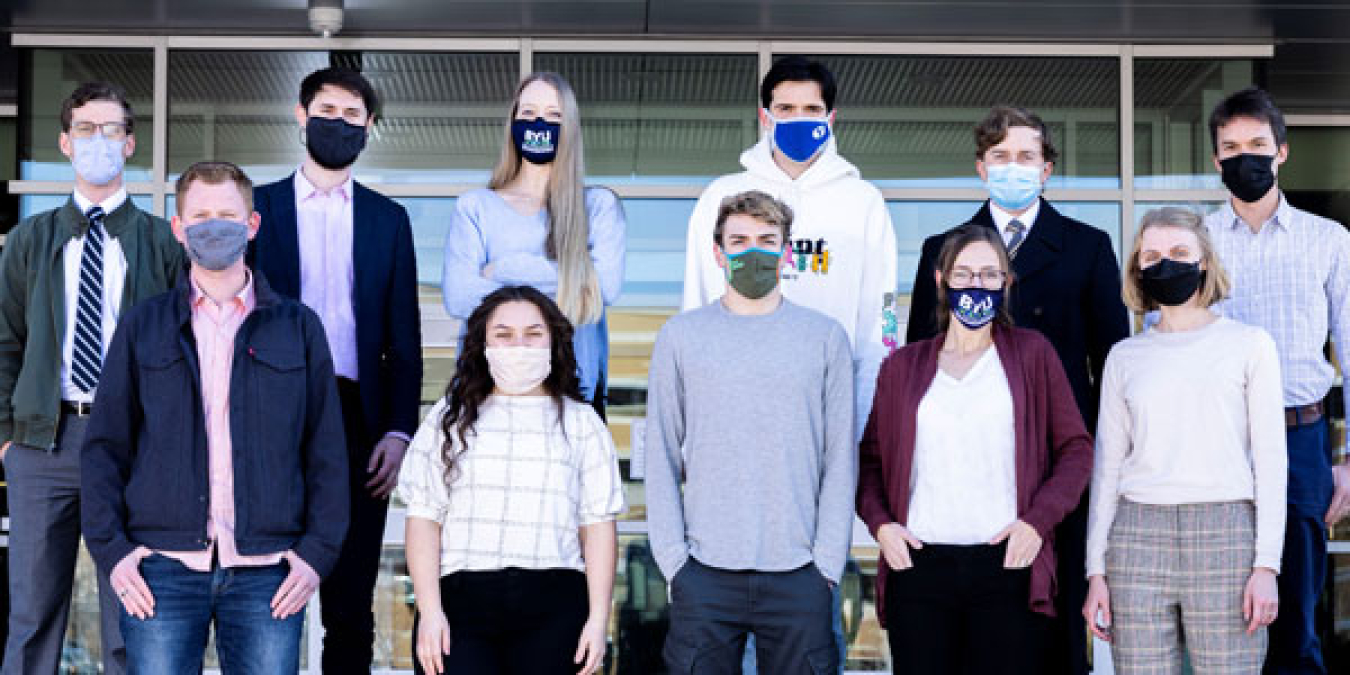BYU CWC Team
Brigham Young University, Provo, Utah
Faculty Adviser
Andrew Ning, [email protected]
Student Lead
David McClintock, [email protected]
Vision and Mission
Through our participation in the U.S. Department of Energy Collegiate Wind Competition (CWC), Brigham Young University’s (BYU’s) BYU CWC Team is raising awareness of the importance of wind energy and renewable energy as keys to developing a carbon-neutral society. We do this by providing students hands-on experience that allows them to tackle real-world wind energy challenges, network with industry professionals, and teach others about careers in renewable energy and wind energy.
Background
This is our second year, which means returning members have learned lessons from the 2021 competition that can enhance our team’s structure. Each of the three main contests has a dedicated lead or subteam. The Connection Creation Contest is overseen by the team president. The Turbine Prototype contest is overseen by the lead of the Hardware and Design subteam, which is composed of senior capstone students. And the Project Development Contest is managed by the leads of the Business subteam, which is composed of students from engineering, biology, and business majors. Having these two subteams opens the BYU CWC Team to any student on campus and allows members to focus their efforts on a single goal, ensuring high-quality deliverables are prepared in advance of the competition deadlines. The team structure also makes recruitment efforts easier, because recruiting can meet specific needs of the group.

Back row (left to right): Adam Welker, Adam Kagi, Dr. Julie Crockett, McKay Shurtz, Spencer Drennan, Dr. Andrew Ning. Front row: David McClintock, Scheridan Vorwaller, Matt McFadgen, Ariel Cable, Ara Bolander
Strategy
BYU CWC Team members come from all over the world, and their diverse experiences bring different perspectives to our problem-solving efforts. Our team excels at analyzing the weak points of our work, finding the flaws in designs, and improving them. However, rather than waste time trying to achieve perfection, we acknowledge that a finished product will always have room for improvement. We document our work thoroughly to allow for refinement in future years while being flexible with redesigns to address changes in the competition rules. In addition, the team leverages experience from BYU Professor Andrew Ning’s Flight, Optimization, and Wind Labs help us optimize our turbine design and wind power plant layouts.
A lesson we learned from last year’s competition—and a recurring message we receive from industry contacts—is to schedule our time wisely. This is reflected in our approach to the competition, where we set clear goals every month as milestones toward each deliverable. With this strategy, we’ve been able to minimize stress, and so far, we have completed each deliverable several days in advance of the deadline.
Follow Us
- Facebook: BYU Wind Energy Club | Brigham Young University
- Instagram: @byuwindenergyclub | Brigham Young University
- LinkedIn: BYU Wind Energy Club | Brigham Young University
- Twitter: @BYUWindEnergy | @BYU
This content was submitted to the U.S. Department of Energy by the team. Find more information on other CWC 2022 teams.

